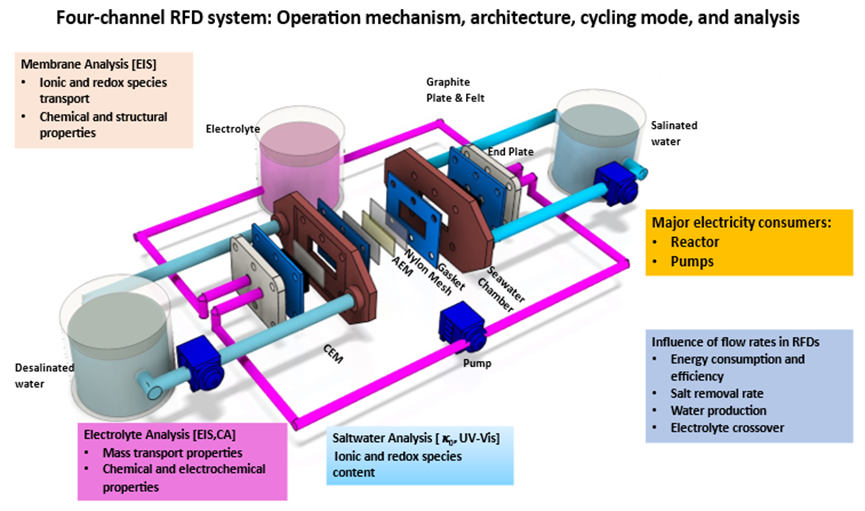Stephen A. Maclean et al.’s “Investigation of Flow Rate in Symmetric Four-Channel Redox Flow Desalination System” recently appeared in Cell Reports Physical Science. The research article aims to explore the influences of hydrodynamic conditions on the mass transport limitations of redox flow desalination systems for further improvement. This work is done by an international team and the team is led by André D. Taylor (primary corresponding author), professor of Tandon School of Engineering at New York University. Guo-Ming Weng (co-corresponding author), associate professor of Shanghai Key Laboratory of Hydrogen Science & Center of Hydrogen Science, School of Materials Science and Engineering at Shanghai Jiao Tong University, and Jason A. Röhr, principal scientist at the Singh Center for Nanotechnology at the University of Pennsylvania and Industry Assistant Professor at New York University, were also involved in this work. The abstract appears below.
“Flow rate can influence overpotentials that cause energy losses in electrochemical and desalination systems, but its effect on RFD of seawater remains unexplored. Here, we report flow rate’s operational effect on seawater desalination through parametric investigation of a RFD using ferri-/ferrocyanide and elucidate its impact on overpotential using in-situ electrochemical impedance spectroscopy (EIS). Increasing flow rates of electrolyte channels reduced electrolyte-membrane interfacial resistances, which promoted ionic fluxes across ion-exchange membranes. Intriguingly, we enhanced the average salt removal rate by 16.7-fold (48.48 → 811.55 µg cm-2 min-1) and reduced energy consumption (~145 → ~95 kJ mol-1) with merely 12.5 mM FeCN, when we increased flow rates of electrolyte channels (5 → 50 mL min-1) at 0.8 V and high desalinated water production rate (699.3 L m-2 h-1). This improvement was due to the electrolyte-membrane interfacial resistance drop (~25.0 → 1.3 Ω). These findings offer insight on practical operation and analysis of RFD.”

Figure 1. Schematics of 4-channel redox flow desalination (RFD) system.
Read the full article: https://doi.org/10.1016/j.xcrp.2023.101761
